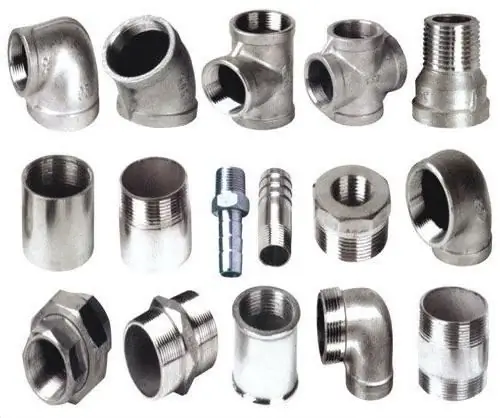2026 Author: Howard Calhoun | [email protected]. Last modified: 2025-01-24 13:10:38
Fittings made of cast iron and steel are widely used in the process of pipe installation. Without these elements, it is unlikely that it will be possible to design any sewerage or water supply system. It should be noted that the range of styles is so wide that almost any configuration can be made from pipes.
Today there are companies that provide customers with all the necessary shaped products. To get acquainted with the assortment, it is enough to visit several specialized stores, pay attention to product catalogs.

Which materials are suitable for production
Any shaped parts of the pipeline are made of steel (VChShG cast iron is also often used). Much depends on which specific pipes are used - made from the first or from the last material. It's simple: if made of steel, then the fittings must be steel.
As practice shows, cast-iron fittings are mainly made with sockets, which is why it is considered that this is the most popular type of pipe connection to each other. Although flanged cast iron products also exist. If we talk about shaped steel parts, then they can only be flanged.

What modern companies offer
As a rule, any company with a good reputation has a production department in its arsenal, where shaped products are made. To obtain a style from cast iron, a material of the VChShG grade (high strength, with impurities of nodular graphite) is used. The parameters of products made from such raw materials are so good that products can be used for a very long time - at least fifty years.
From above, the shaped parts are covered with different compositions. If the products are made of steel, then on the outside they are treated with a layer of soil, while using enamel, which is resistant to corrosion. From the inside, the surface is not processed - this is prohibited by SNiP in order to avoid a negative impact on the quality of water that the population needs. If we consider cast iron products, then everything is different here - from the inside they are treated with a cement-sand composition, from the outside - with zinc paint or paintwork.
It should be noted that the dimensions of the sockets and flanges of fittings fully comply not only with GOST 5525-88, but also with ISO 2531. Thanks to this, the products can be used even for installation work where pipes from foreign manufacturers are involved.

Classification of fittings
We figured out what shaped products are, now we should talk about internal classification - it is in every type of product. That is, the common name "tee" combines several types of styles at once, "release" - two,"transition" - four.
Consider the main groups - it all depends on the purpose of the fittings:
- Elbows, elbows, corners.
- Manifolds and tees.
- Transitions.
- Plugs.
- Flanges.
- Cast iron couplings.
- Other items.
Style: etymology
In general, fittings have a lot of different names. It is worth noting several phrases that refer to the same product.
- Shaped products for installation (it is assumed that we are talking about the components of which, for example, plumbing is made).
- Fitting - this concept came from English, can be translated as "fastening, installation, installation".
- Style is the most concise and capacious designation of the range of products that are in demand during the installation of pipelines.
The term "cast iron" also exists - this word is used to refer to connecting elements made of cast iron, but the concept cannot be called completely correct. So has long been called decorative ornaments for fences and gates, as well as casting for Russian stoves. Shaped elements are not completely cast from cast iron, since their surface is quite complex.
Recommended:
Black re altors: how do they work and who are they?

Huge sums are involved in real estate transactions. No wonder there are so many unclean hands who want to get warm on this. After all, you don’t need to produce or invent anything - he pulled off a cunning scheme and was left with an amount exceeding the annual earnings of some citizens. A special term has been coined for such scammers. So, who are black re altors, how do their schemes work?
What are company shares and why are they needed?

Shares are securities issued by a company for its own development and acquired by investors and speculators for profit
Lists of privileged professions: why are they needed?

What professions are called preferential? What are the benefits for employees in this case? Where can I find out if your profession fits into this category?
Rooster spurs: what are they and why are they needed?

Spurs grow on the legs of a rooster, which are horny growths. These formations help birds during fights, protecting them from enemy attacks. What are spurs in a rooster, do they need to be removed and how to do it - a question to be considered in more detail
Eurobonds - what is it? Who issues Eurobonds and why are they needed?

For the first time, these instruments appeared in Europe and were called eurobond, which is why today they are often called "eurobonds". What are these bonds, how are they issued, and what advantages do they give to each participant in this market? We will try to answer these questions in detail and clearly in the article

